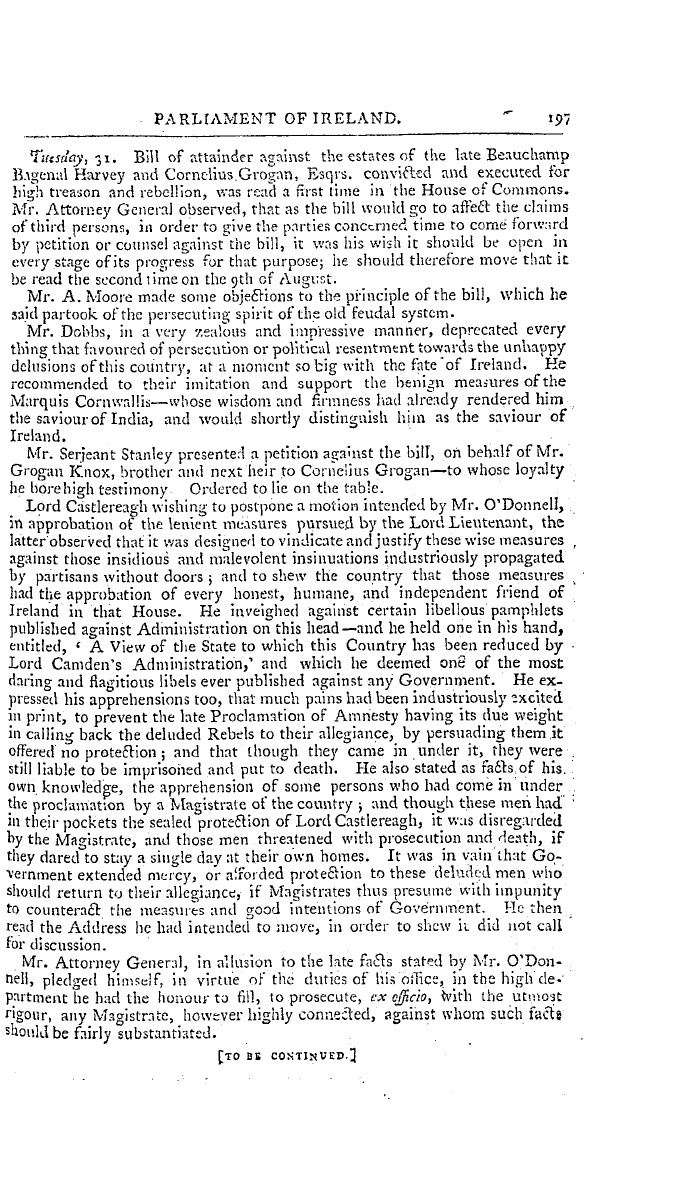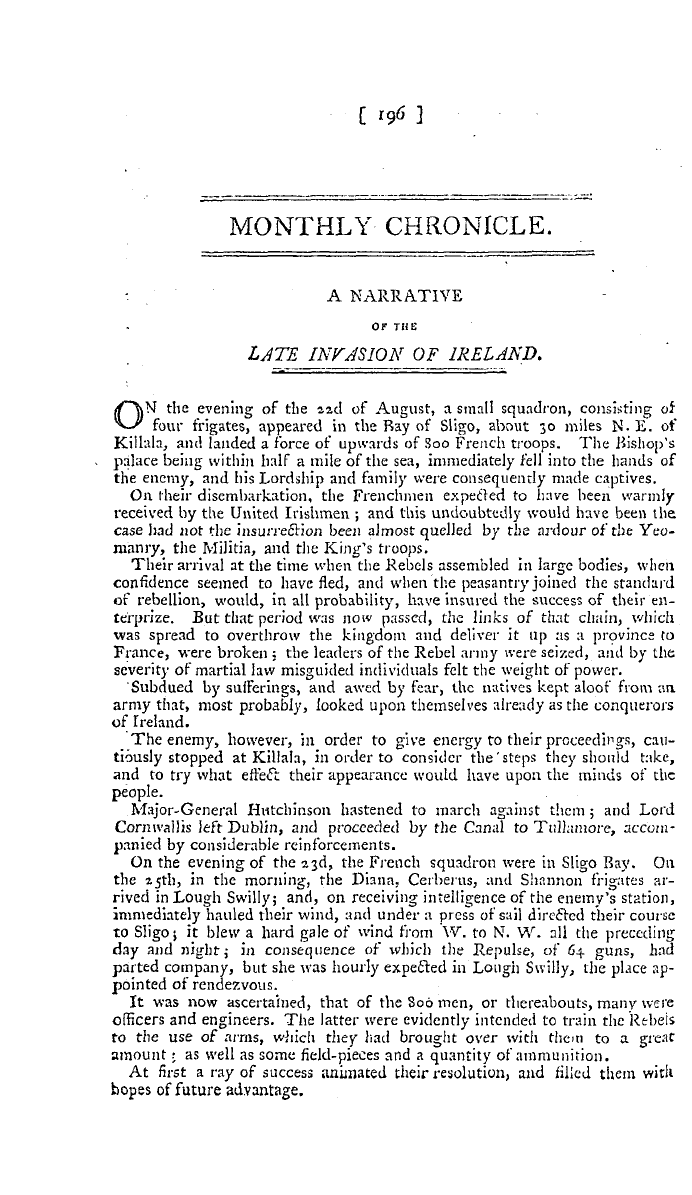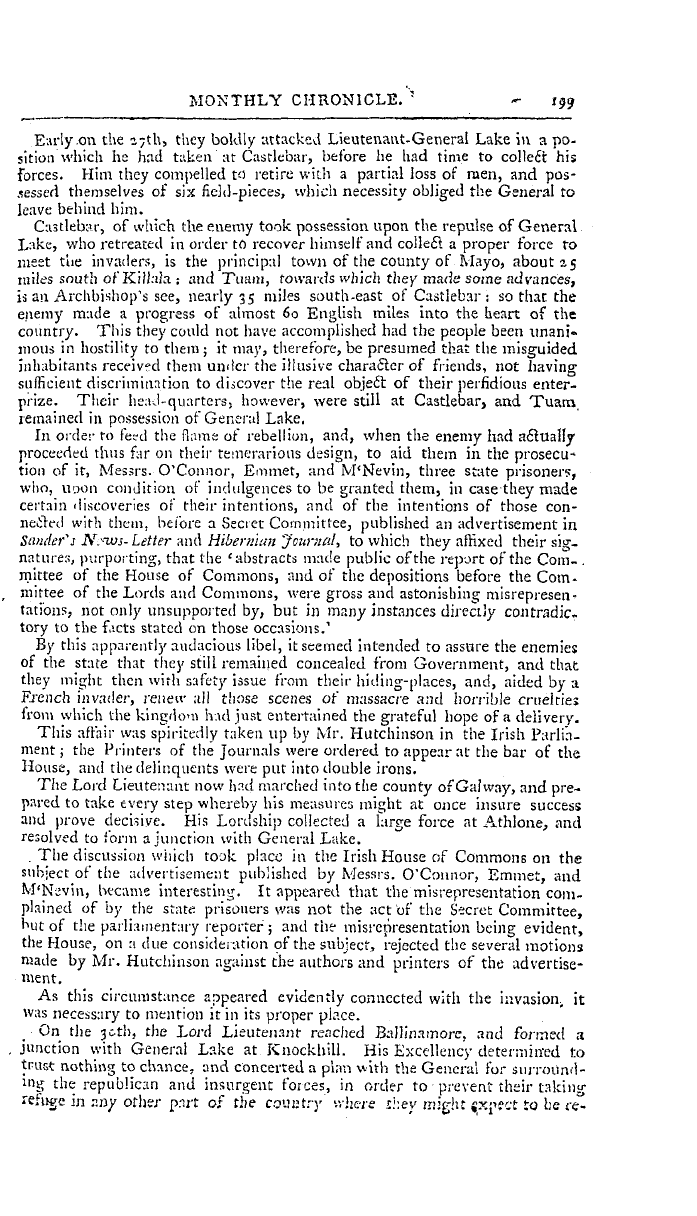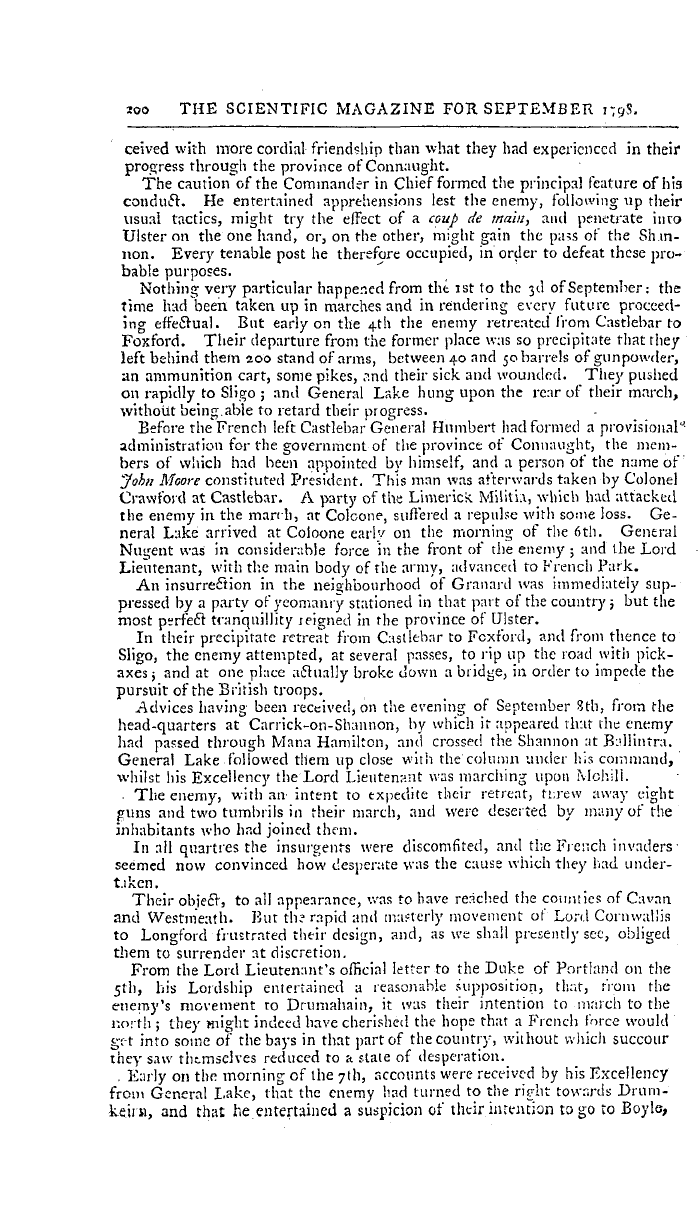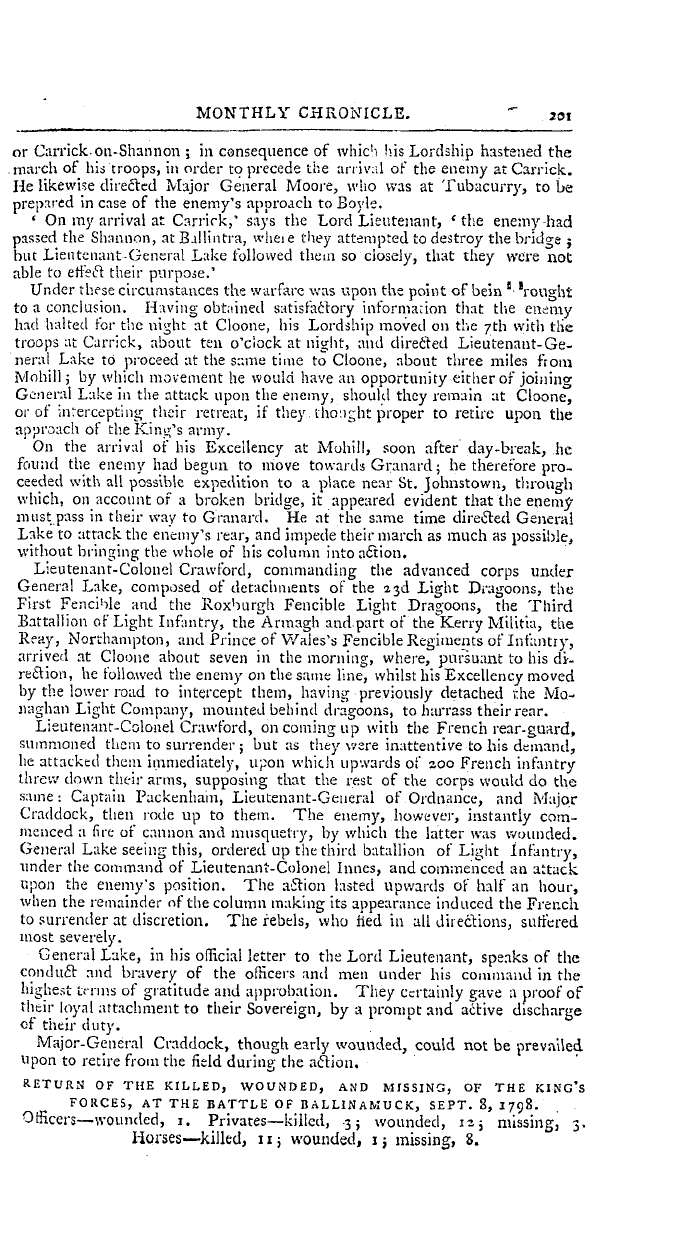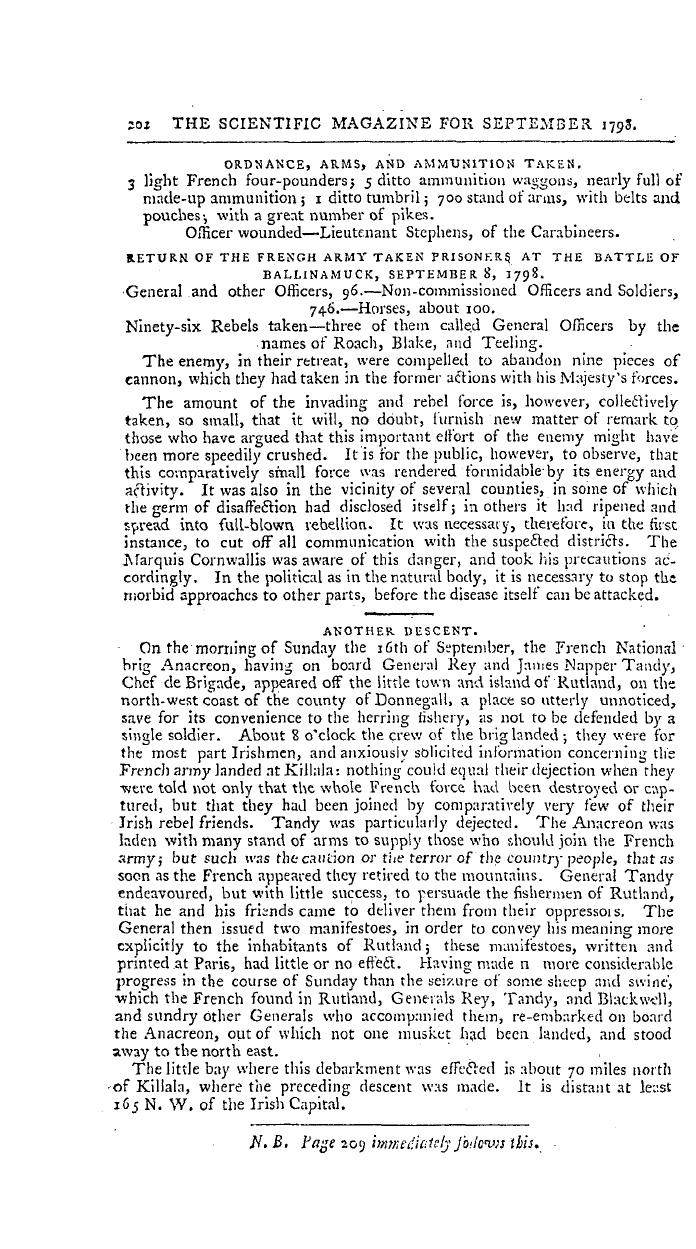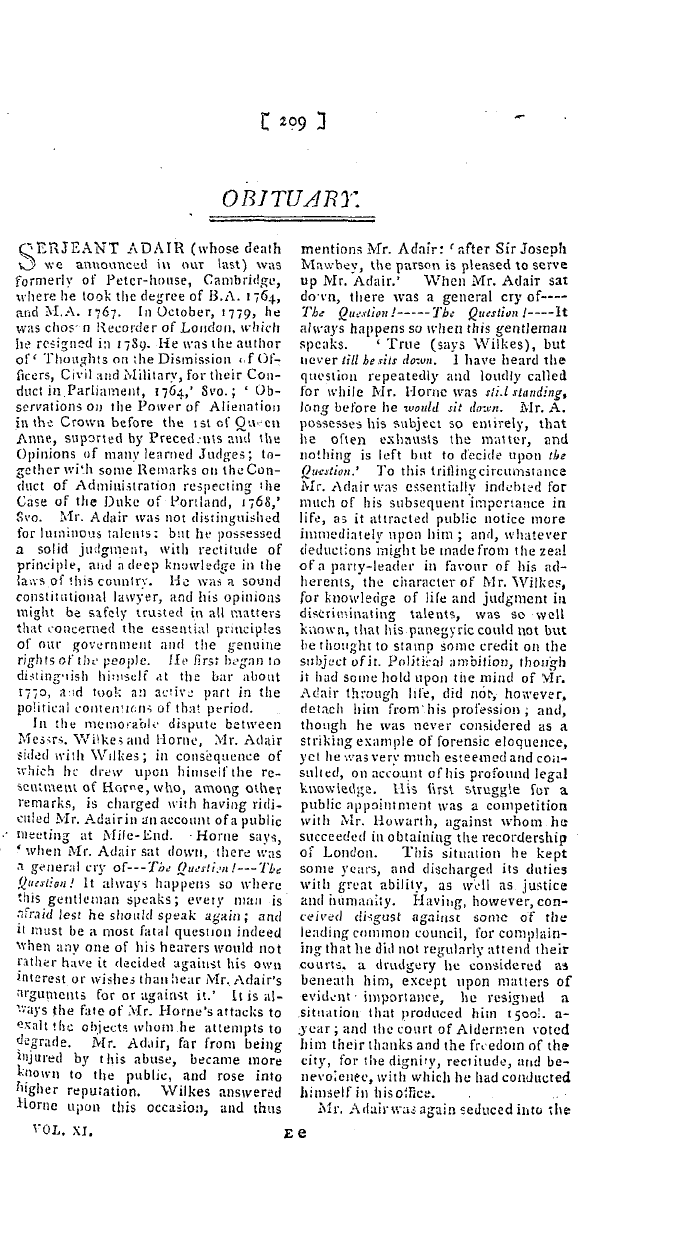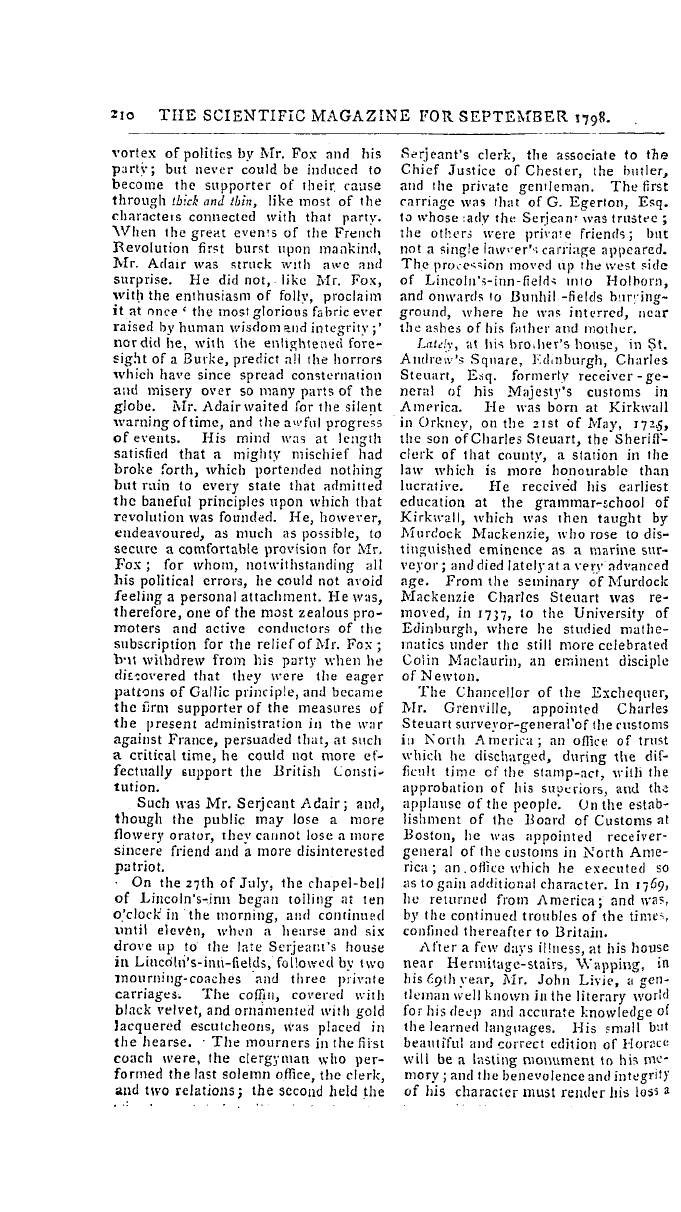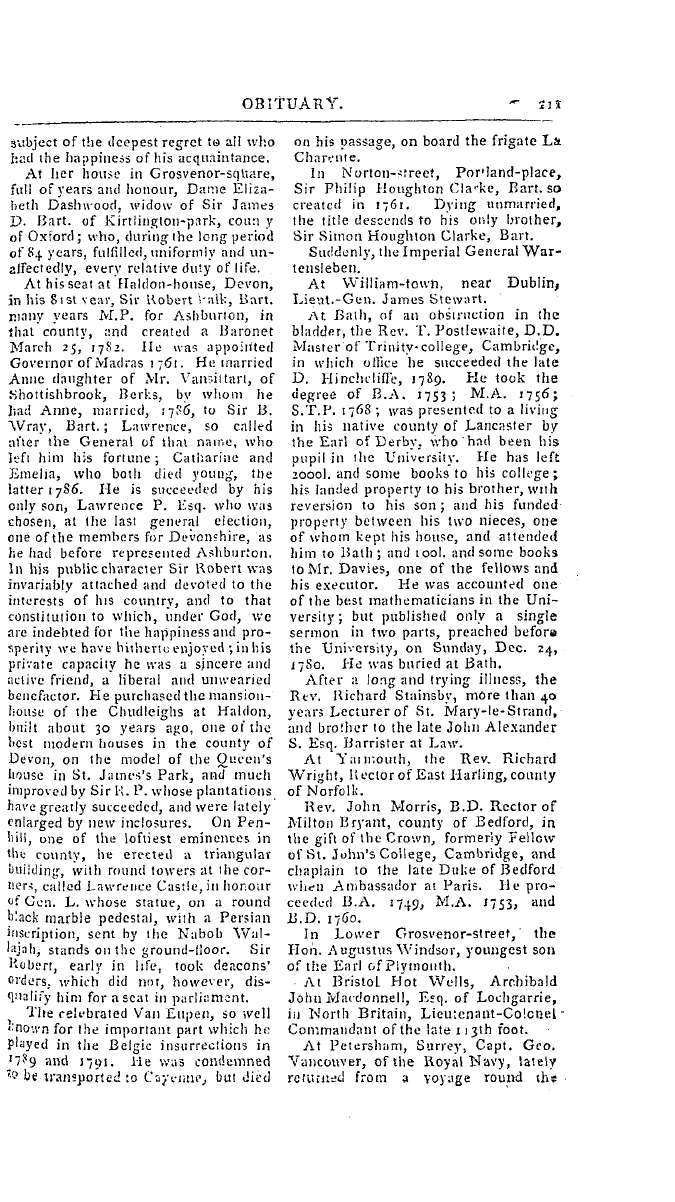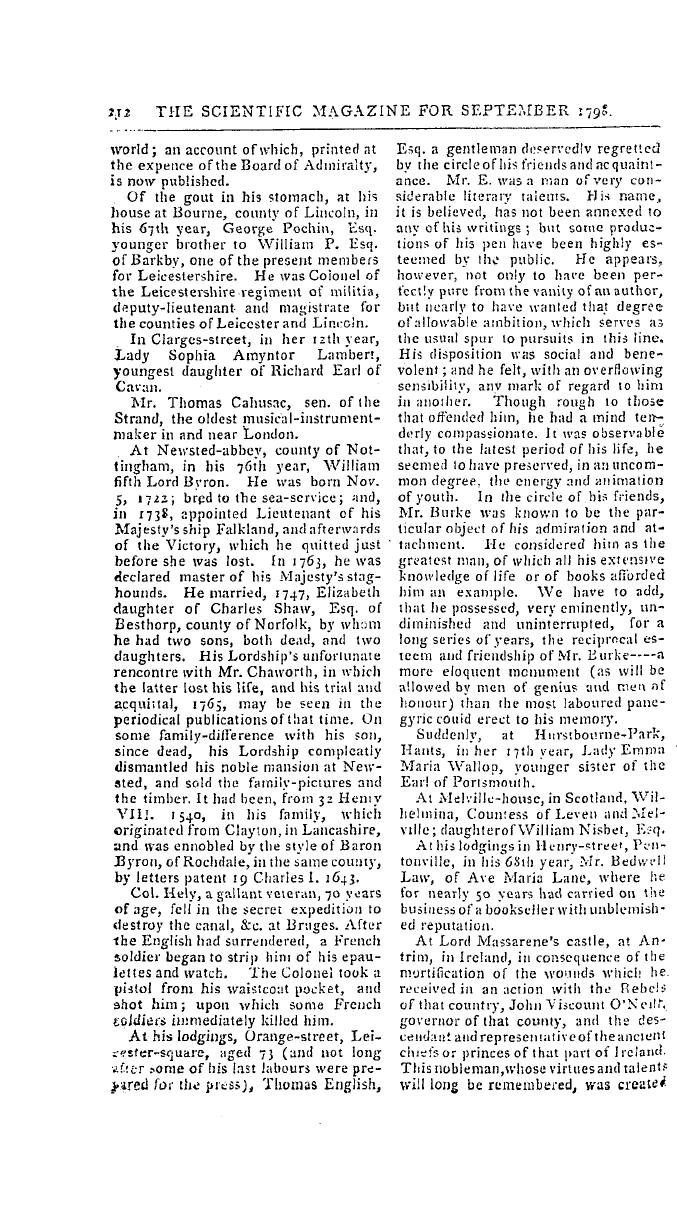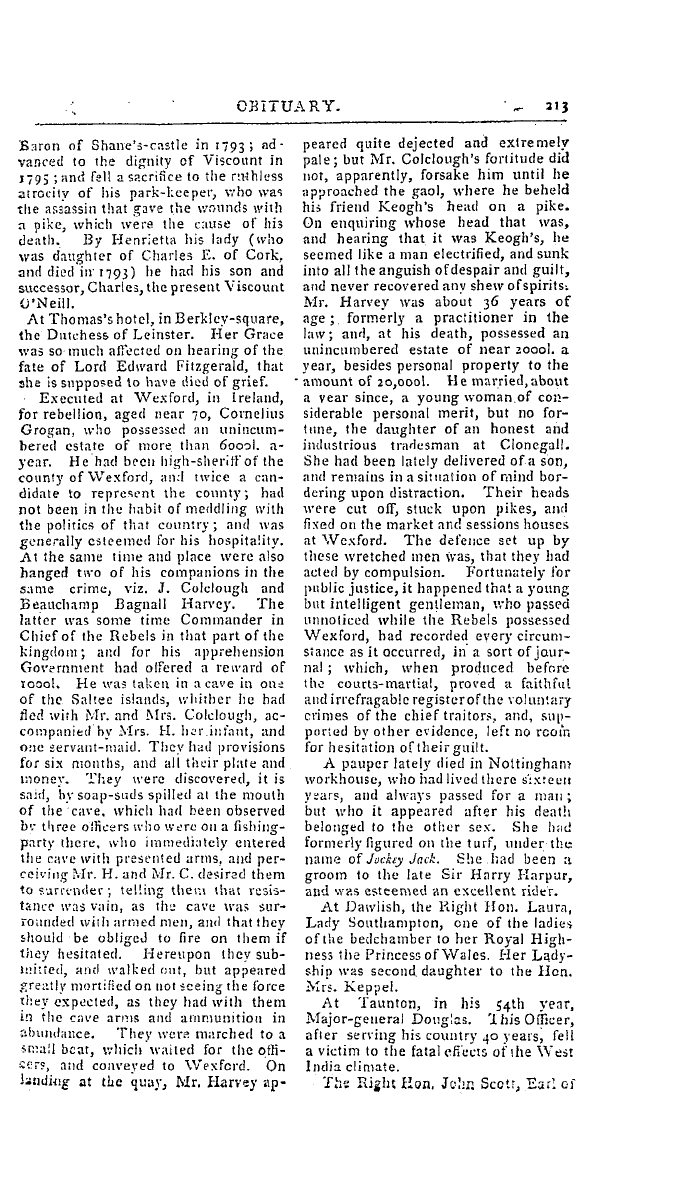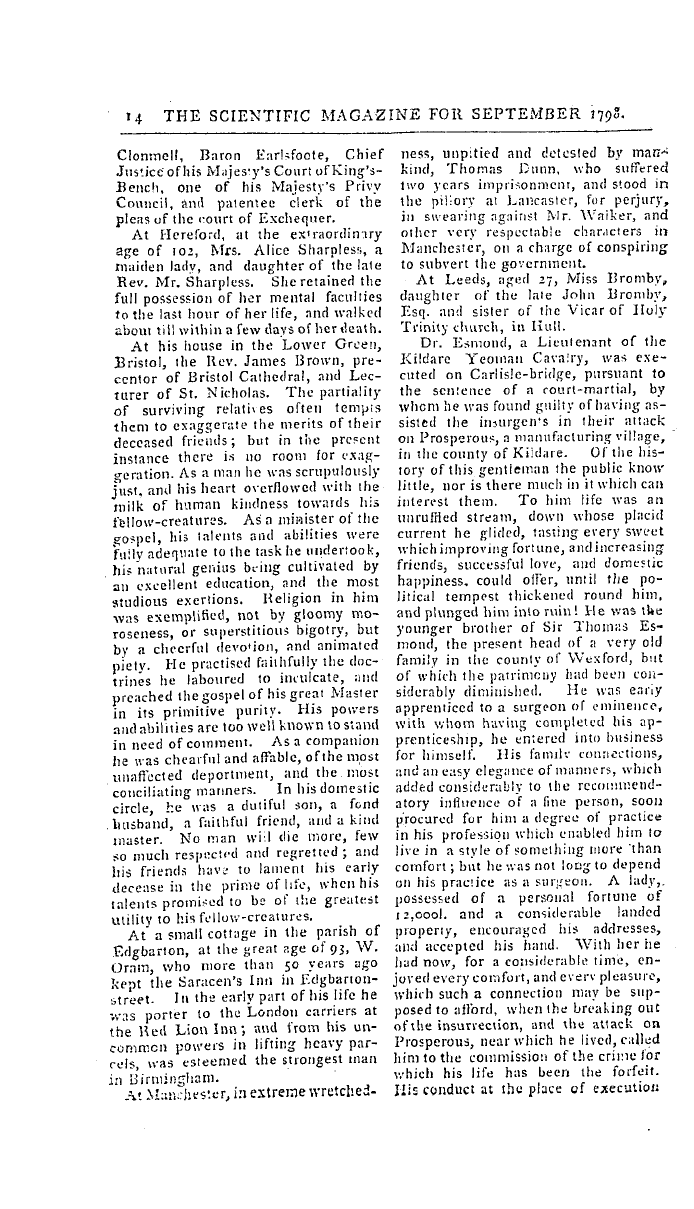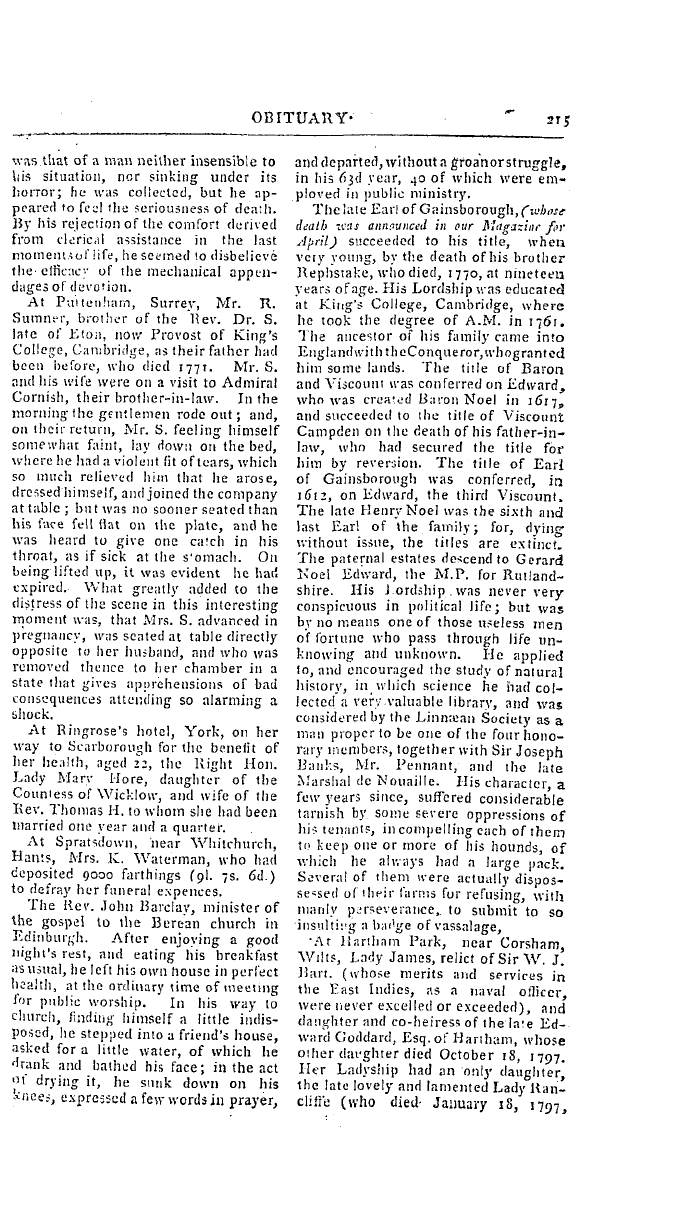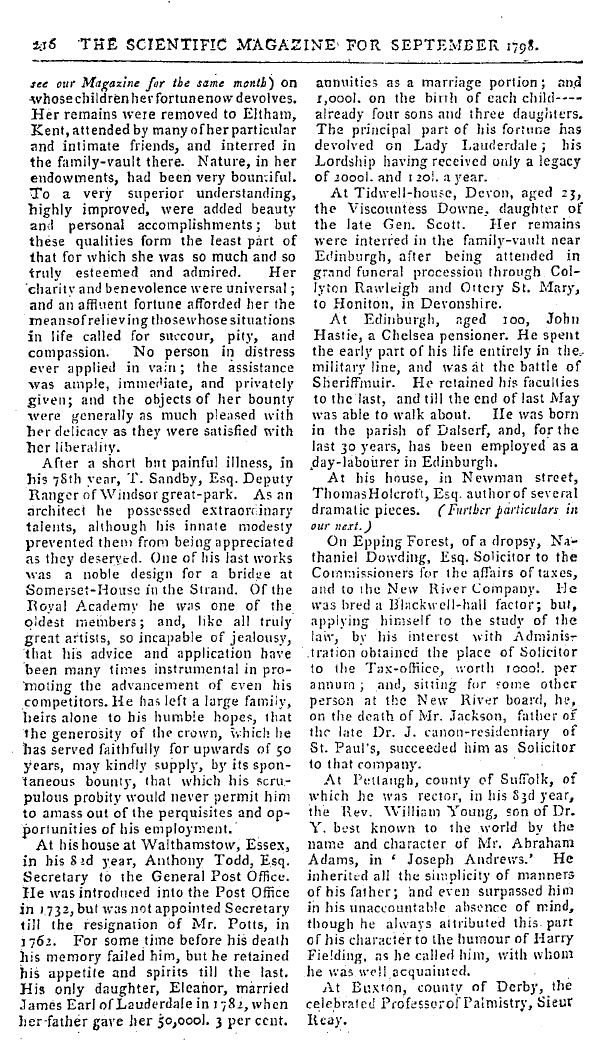-
Articles/Ads
Article SCIENTIFIC INTELLIGENCE. ← Page 3 of 4 →
Note: This text has been automatically extracted via Optical Character Recognition (OCR) software.
Scientific Intelligence.
METALLIC TRACTORS . THE influence of Metallic Tractors wire first discovered by Galvani , the celebrated professor at Bologna , and after his nuns termed Galvanism . These * Tra & ors 3 xe , formed by combinations of dir . ' erent metal substances . Gold , silver , zinc , and tin are the meti . ls yet known to be the most favourable . These , when applied to the nervous or muscular organs produce livel y sensations and even violent contractions . The u . uscular fibres and nerves have been excited to powerful action b y the use of them long after eveiy appearance of vitality has been . removed .
. Dr . Perkins , of America , and his son , now in London , have successfuUjapplied ; hi ; invention to the ciin . of various diseases of the human body where an ext-a degree of nervous energy or vital heat was present , except when the disease was situated in the internal viscera , too remote from the part wheis the instruments could be applied . Rheumatism , some gouty attentions , pleurisy , opthalmias , erisypelas , violent spasmodic convulsions , ( as epileptic fits and the locked jaw ) pain and swelling amending contusionsinflammatory
, tumours , pains from a recent sprain , painful effects of a burn or scald , pains in the head , teeth , and indeed most kinds of painful topical affedtions have yielded to the influence of these Trailers . The cure is accomplished by drawing rliem gently over the part aifeffed . Mr . Meigs , professor of natural philosophy at Newhaven , removed by the application of them , a dangerous peripneumonic complaint under which his daughter laboured . She obtained almost instantaneous relief .
Metallic Tractors applied to the bodies of persons supposed recentl y dead will infallibly establish the fa £ t of life or death , and thereby avoid premature inhumation , as symptoms of putrefaction do not always constitute th * death of the individual .
SOUND . J . . ACQUIN , professor of chemistry at Vienna , in a letter toM . Dc lametherie , gives the following account of some curious experiments which he made lately on this subjeft : < Professor Chladni at Wirtemberg , alreadycelebrated by several discoveries in the theory of the phenomena of sound induced me , during his residence at Vienna , to make experiments on the property of different gases considered as sonorous bodies ; and particulaily on that which constitutes
gas our atmosphere , and serves as the organ of voice . We took a glass bell furnished at the top with a brass cock , such as that used for filling bladders with gas , and made the internal aperture of the cock to communicate with a small tin flute , . about six inches in length . This bell being placed in the pneumatic tub , and filled with gas of any kind , a bladder with a cock , and filled with the same gas as the bell , was fitted to the cock of the bell , and by pressing the bladder gently the ilute was made to sound . Comparative experiments were repeated in this manner with atmospheric air
oxygen gas , hydrogen , the carbonic acid , and nitrous gas . The strength of the sound was always the same : but , compared with that in atmospheric air the oxygen gas gave half a tone lower ; axotic gas , prepared different ways ' gave almost always a semi-tone lower ; hydrogen gas gave nine or eleven tones higher ; the carbonic acid gas a third lower ; and the nitrous gas almost the same : a mixture of oxygen gas and azotic gas , in the proportion of atmospheric air , gave again the tone ofthe last mentioned airthat is to
, say , a semi-tone higher than each of the compound gases alone . As long as the two gases were not uniformly mixed there was a fri ghtful discord . Chladni has promised to publish a full account of these interesting experiments , which differ entirely from those of Dr . Priestley .
Note: This text has been automatically extracted via Optical Character Recognition (OCR) software.
Scientific Intelligence.
METALLIC TRACTORS . THE influence of Metallic Tractors wire first discovered by Galvani , the celebrated professor at Bologna , and after his nuns termed Galvanism . These * Tra & ors 3 xe , formed by combinations of dir . ' erent metal substances . Gold , silver , zinc , and tin are the meti . ls yet known to be the most favourable . These , when applied to the nervous or muscular organs produce livel y sensations and even violent contractions . The u . uscular fibres and nerves have been excited to powerful action b y the use of them long after eveiy appearance of vitality has been . removed .
. Dr . Perkins , of America , and his son , now in London , have successfuUjapplied ; hi ; invention to the ciin . of various diseases of the human body where an ext-a degree of nervous energy or vital heat was present , except when the disease was situated in the internal viscera , too remote from the part wheis the instruments could be applied . Rheumatism , some gouty attentions , pleurisy , opthalmias , erisypelas , violent spasmodic convulsions , ( as epileptic fits and the locked jaw ) pain and swelling amending contusionsinflammatory
, tumours , pains from a recent sprain , painful effects of a burn or scald , pains in the head , teeth , and indeed most kinds of painful topical affedtions have yielded to the influence of these Trailers . The cure is accomplished by drawing rliem gently over the part aifeffed . Mr . Meigs , professor of natural philosophy at Newhaven , removed by the application of them , a dangerous peripneumonic complaint under which his daughter laboured . She obtained almost instantaneous relief .
Metallic Tractors applied to the bodies of persons supposed recentl y dead will infallibly establish the fa £ t of life or death , and thereby avoid premature inhumation , as symptoms of putrefaction do not always constitute th * death of the individual .
SOUND . J . . ACQUIN , professor of chemistry at Vienna , in a letter toM . Dc lametherie , gives the following account of some curious experiments which he made lately on this subjeft : < Professor Chladni at Wirtemberg , alreadycelebrated by several discoveries in the theory of the phenomena of sound induced me , during his residence at Vienna , to make experiments on the property of different gases considered as sonorous bodies ; and particulaily on that which constitutes
gas our atmosphere , and serves as the organ of voice . We took a glass bell furnished at the top with a brass cock , such as that used for filling bladders with gas , and made the internal aperture of the cock to communicate with a small tin flute , . about six inches in length . This bell being placed in the pneumatic tub , and filled with gas of any kind , a bladder with a cock , and filled with the same gas as the bell , was fitted to the cock of the bell , and by pressing the bladder gently the ilute was made to sound . Comparative experiments were repeated in this manner with atmospheric air
oxygen gas , hydrogen , the carbonic acid , and nitrous gas . The strength of the sound was always the same : but , compared with that in atmospheric air the oxygen gas gave half a tone lower ; axotic gas , prepared different ways ' gave almost always a semi-tone lower ; hydrogen gas gave nine or eleven tones higher ; the carbonic acid gas a third lower ; and the nitrous gas almost the same : a mixture of oxygen gas and azotic gas , in the proportion of atmospheric air , gave again the tone ofthe last mentioned airthat is to
, say , a semi-tone higher than each of the compound gases alone . As long as the two gases were not uniformly mixed there was a fri ghtful discord . Chladni has promised to publish a full account of these interesting experiments , which differ entirely from those of Dr . Priestley .































































